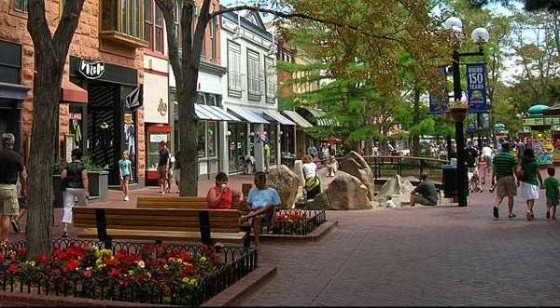What is triple-bottom-line real estate development?

Many of us know that the triple bottom line means “people, planet and profit”, being economically, socially and environmentally beneficial. That is, expanding the traditional reporting framework to take into account ecological and social performance in addition to financial performance (Wikipedia).
So what does this mean for real estate development? What would triple bottom line real estate development look like? Keep in mind this is about the real estate development industry, not about the city or neighborhood as a whole, which is obviously more important, but a separate focus nonetheless.
Economic/Profit
– It’s financially viable to the real estate developers and investors. Many say that developers make too much money and some say they shouldn’t make any. That of course is unrealistic, as real estate development is a hugely risky industry (just witness the recent state of affairs) and it’s not like they’re dominating the Fortune 500. Really though, the real estate developers that sincerely care about and work with the local residents are often embraced as heroes, while the ones that don’t are seen as villains. Simple as that.
Environmental/Planet
– The development is LEED-ND certified and the buildings are LEED certified. The U.S. Green Building Council has established a reputable standard by which to make developers accountable when going green. It covers just about any kind of green consideration you can think of, from rainwater barrels to alternatives to car ownership.
– Housing and transportation options that reduce carbon footprints are available. As stated, the opportunity to live in smaller units (heating/cooling of buildings has the largest carbon footprint) and walk or bike (transportation is second) to destinations is the best one can do to be green.
Social/People
– The community is a meaningful partner in the development. This is what crowdsourced placemaking, and this site, is all about.
– Local business development is supported over chains. Chains really don’t need support as far as real estate development goes, they have their business model and investment resources already set. Why is this under “Social” rather than “Economical”? Because it’s a lot easier for developers to prioritize chains that are familiar and can pay higher rents. However, if developers put the time in to grow successful unique local businesses, property values rise as the locale becomes more of a desirable regional draw. See the “Economic Impact of Local Businesses vs Chains” for the best summary of evidence regarding how local businesses are better for the local economy as well.
– Construction jobs are sourced locally whenever feasible. Factors to consider are whether union labor accomplishes this or not, which can add significantly to housing prices that are trying to stay low, and whether or not local labor is willing to be trained on more energy-efficient construction like structural insulated panels ys stick frame, the former of which has higher costing materials, but with lower labor costs.
– Housing is provided at prices that the local residents can afford. This means a variety of housing types for a variety of incomes, and since most of the lower to medium incomes are underserved when it comes to new housing, it also means developing smaller, high-style-low-cost finished units without required parking spaces (saving another $20,000).
– Job-creating businesses are sufficiently attracted. This doesn’t mean stealing other cities’ companies, resulting in a zero-sum gain overall. It’s also not just about incubating startups, but investing in the gazelles, those companies that are carefully evaluated to have the best chances of growing. It also means there’s sufficient office space in the heart of the retail entertainment district, where the employees of these companies are often happiest, and thus more likely to stay and help grow the company. Of course, housing they can afford has the same effect.
– Placemaking is designed to emphasize quality of life. The Congress for the New Urbanism (CNU) Charter is one of the best set of placemaking principles around, with walkability at the heart of its values.
– Public places build a sense of community. The most popular in crowdsourced placemaking circles? Piazzas, central plazas, public markets, food halls. Project for Public Spaces is a nonprofit that knows more about developing successful public spaces than any other.
– Car-free lifestyles are an option. Typically, it’s not an option, where you must buy a parking space with your home, and key public amenities and businesses are not walkable, or even bikeable. Developments based on the CNU Charter are designed to be walkable for most everyone. Parking should be unbundled from the purchase of the home, and car sharing, bike sharing, a bike-friendly environment (lanes, parking) and proximity to transit are fundamental.
Why is the social/people component the largest by far? Perhaps it’s because social behavior is at the core of what we do financially and environmentally.
